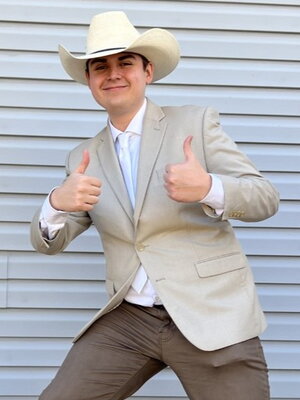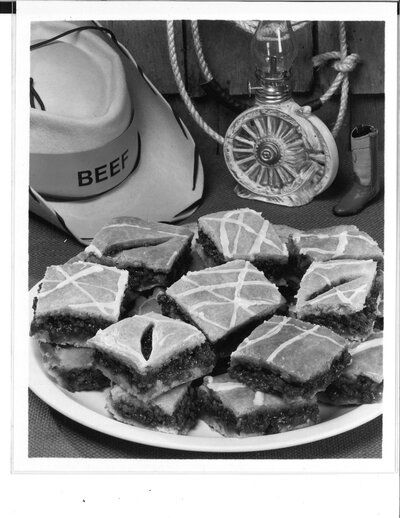
During summer 2025, graduate student Dale Mize went on a research trip for his dissertation, which explores how health concerns shaped the beef industry in the United States from 1945 to 1995. Read on to learn more about his journey.
What do cattle ranches, vintage food advertisements, and public health campaigns have in common? Turns out, quite a lot. This summer, I hit the road to Colorado and Wyoming to dig into archives stuffed with beefy history. From government memos to flashy marketing campaigns, I explored how beef has been produced, promoted, and policed across the United States.
My first stop took me to Laramie, Wyoming, where I visited the American Heritage Center at the University of Wyoming. The first of my two weeks there was consumed by digging through National Cattlemen’s Association records. Luckily for me, this was quite the feat. Turns out, the organization kept just about everything related to beef. From government documents to cookbooks, the archive was rich with material. Some of my favorite finds included letters from the National Cowbelles’ Association pushing back against negative media coverage of beef on radio, television, and in the press; colorful ad campaigns; “Father of the Year” contests sponsored by beef producers; and even promotional recipes for beef-based desserts. Yes, you read that right – sweet beef dessert bars are apparently a real thing.
During my second week, I shifted to exploring records from the National Meat and Livestock Board, where my favorite find was probably the meat judging handbooks. These books are detailed guides that trained a generation of future agricultural professionals on how to evaluate cuts of meat, defining what is, and is not, desirable. While these favorite objects may seem like a smorgasbord of random things they in fact reveal interesting patterns about what factors increase and decrease beef consumption.

My second stop on my trip took me to Steamboat Springs, Colorado where I had the chance to reconnect with ranchers I interviewed in 2022 working on the Art of Ranching Project out of Colorado State University. These conversations helped me to understand the on the ground level of ranching and the roles of the women and men who raise the animals that ultimately end up on grocery store shelves across the nation. Hearing directly from the people who live this work every day grounded my archival research in lived experience and reminds us that beef is more than a product; it is a way of life for many families in the West.
My third and final stop took me to Colorado State University in Fort Collins, Colorado. By talking with Linda Meyer, the agricultural collections archivist, I was able to learn about the collections of John Matushima and Temple Grandin, two legendary actors in the beef industry – both changing the way cattle are managed in their own respective ways. Ultimately, this trip was a crucial step forward in my dissertation research. The archival work I was able to accomplish provided a wealth of primary sources that will help me trace the cultural, political, and economic narratives that have shaped the beef industry in the 20th century U.S.
By Dale Mize